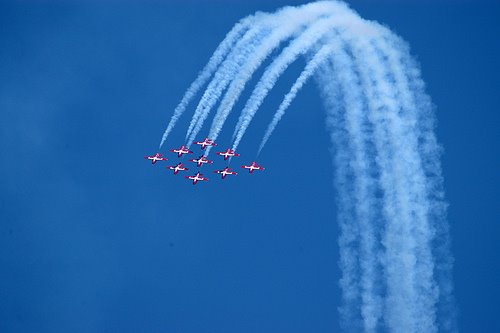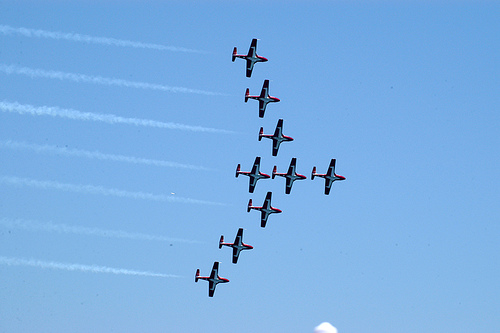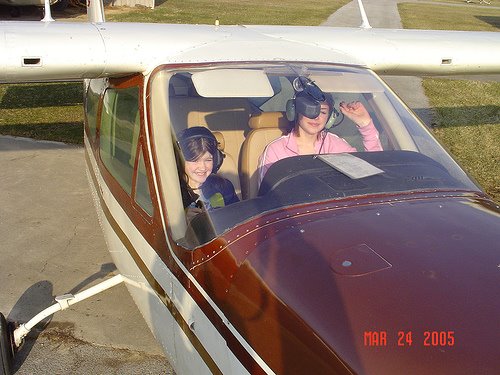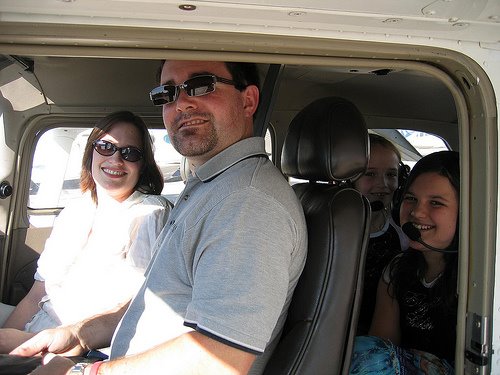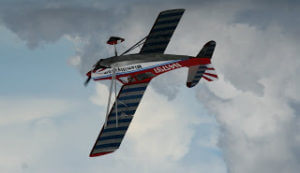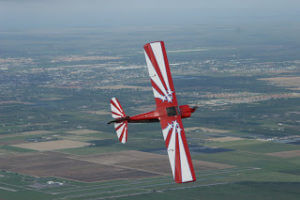On May 11, 2009, the front page of the Wall Street Journal featured the following article that speaks to safety training and practicing what you learn to beyond proficiency.
By ANDY PASZTOR
The captain of a commuter plane that crashed Feb. 12 near Buffalo, N.Y., had flunked numerous flight tests during his career and was never adequately taught how to respond to the emergency that led to the airplane’s fatal descent, according to people close to the investigation.
All 49 people aboard were killed, as well as one person in a house below, when the plane crashed just a few miles short of the Buffalo airport en route from Newark, N.J. The Bombardier Q400 turboprop in the crash, which will be the subject of a National Transportation Safety Board hearing Tuesday, was operated by commuter carrier Colgan Air Inc., a division of Pinnacle Airlines Corp.
Capt. Marvin Renslow had never been properly trained by the company to respond to a warning system designed to prevent the plane from going into a stall, according to people familiar with the investigation. As the speed slowed to a dangerous level, setting off the stall-prevention
system, he did the opposite of the proper procedure, which led to the crash, these people said.
Additionally, his 24-year-old co-pilot, Rebecca Shaw, had complained before takeoff about being congested and said she probably should have called in sick, according to people who have listened to the cockpit voice recording.
The circumstances surrounding Continental Connection Flight 3407 have prompted investigators and regulators to examine Colgan’s hiring and training practices. At the NTSB hearing, witnesses are expected to provide new allegations about training shortcomings, as well as the prevalence of chronic pilot fatigue and lapses in cockpit discipline. The NTSB also is expected to be critical of the Federal Aviation Administration’s oversight of the airline. The FAA, which has said it is investigating the airline over pilot scheduling, declined to comment on issues likely to be raised in the hearing.
Pinnacle has said its pilot training programs “meet or exceed regulatory requirements for all major airlines” and crews “are prepared to handle emergency situations they might face.” On Sunday, spokesman Joe Williams confirmed in an email that Capt. Renslow had five “unsatisfactory” training check rides in his career — including two at Colgan — but passed a subsequent series of training tests and was “fully qualified in the Q400” aircraft.
Testimony Tuesday
In recent weeks, Colgan’s top two training officials resigned; Mr. Williams has said their decisions were voluntary and not connected to the accident. Darrell Mitchell, Colgan’s departing director of training, is slated to testify at Tuesday’s hearing.
Colgan, based in Manassas, Va., operates nearly 50 planes, carries 2.5 million passengers annually and employs about 480 pilots. It serves as a commuter airline that feeds larger carriers, such as Continental Airlines, United Airlines and US Airways.
Colgan serves 28 routes for Continental Airlines Inc., which said it retains “full confidence in Colgan and its ability to conduct its operations safely.”
US Airways Group Inc. and UAL Corp.’s United Airlines said there haven’t been any changes to their Colgan contracts.
Capt. Renslow, 47, joined Colgan in September 2005 after graduating from a pilot-training academy, employment records show. He had a history of flunking check rides — periodic tests of competency that are also required anytime a pilot begins flying a new type of aircraft. Before joining Colgan, he failed three proficiency checks on general aviation aircraft administered by the FAA, according to investigators and the airline. Colgan’s spokesman said the company now believes Capt. Renslow failed to fully disclose that poor performance when applying for a job.
Once at Colgan, he failed in his initial attempt to qualify as a co-pilot on the Beech 1900 aircraft, and also had to redo his check ride to upgrade to captain on the Saab 340 turboprop, according to investigators. Repeated check-ride failures raise red flags, and large carriers rarely keep pilots who require such extensive remedial training, according to numerous industry officials. Colgan’s Mr. Williams said Capt. Renslow’s last unsatisfactory check ride occurred 16 months before the accident, and he subCapt. Renslow had about 109 hours of experience flying the Q400 as a captain, an unusually limited amount of time by industry standards. He had started flying the craft only two months earlier. According to investigators, the co-pilot, Ms. Shaw, had a clean training record.
The pilots’ families couldn’t be reached for comment.
People familiar with the investigation of the accident — the deadliest U.S. commercial crash in more than seven years — gave the following account of the plane’s last flight:
Both pilots were returning to work after a day off. Capt. Renslow was coming off weeks of late-evening and early-morning flying schedules, often sandwiched around only a few hours of rest. Ms. Shaw had spent the day before the accident skiing. She then took a red-eye flight from Seattle to report for work in Newark.
It was a frigid night. Other planes in the region had reported light to moderate icing, and the pilots observed ice buildup around their own windshield. Bombardier’s twin-engine Q400 has a reputation as a workhorse used extensively in winter and isn’t known to be susceptible to ice accumulation.
Approaching Buffalo
As the plane made its approach toward Buffalo with the autopilot engaged, the crew exchanged idle banter, according to people who have read transcripts of the conversation recovered from the cockpit voice recorder. Federal rules and airline policy prohibit pilots from having extraneous conversations while flying below 10,000 feet.
Flowers lay under a sign outside the Clarence Center United Methodist Church in memory of the victims of Continental Flight 3407.
The crew initially didn’t notice the plane’s speed had dropped dangerously low, sliding under 115 miles an hour, and risked going into a stall. The slowing speed set off an emergency system called a “stick-pusher,” which pushes the control column down in order to send the aircraft into a temporary dive so it can regain speed and recover from a stall.
However, Capt. Renslow tried to force the plane to do the opposite. He yanked back on the controls while adding thrust. His effort was strong enough to manually override the stick-pusher. Within seconds, the plane lost lift, bucked violently and started to roll. It slammed into a house five miles from the runway.
Colgan’s standard training program stops short of demonstrating the operation of the stick-pusher in flight simulators. Without such hands-on experience, safety investigators argue, pilots could be surprised and not react properly when the stick-pusher activates during an emergency. The FAA is required to sign off on all airline training manuals.
On Sunday, Colgan said its FAA-approved program includes “comprehensive” classroom training on the stick-pusher but emphasized a demonstration in a simulator “is not required by the FAA and was not part of the training syllabus” Colgan received when it obtained its Q400s.
Mistaken Assumption
Investigators surmise the pilots didn’t fully understand the operation of one ice-protection system, and therefore incorrectly programmed approach speeds into a flight computer. Startled by an initial stall warning at low altitude, Capt. Renslow reacted with the mistaken assumption that ice accumulation on the tail caused speed to suddenly drop well below normal, investigators believe. The NTSB has said the plane wasn’t significantly affected by icing.
Since the accident, industry and government safety experts have uncovered what they claim are other shortcomings at Colgan. The airline began flying Q400s in February 2008, but Colgan pilots say it wasn’t until nine months later that they received a detailed bulletin on how to use some of its ice safety features. However, the bulletin was delivered three months before the accident. Colgan said that since it started flying the aircraft, pilots “were trained on the use of all components of the ice protection system on the Q400.”
More recently, Colgan removed several of its senior management pilots, known as check airmen, who are responsible for evaluating the performance of crews in the air as well as in simulators. The airline said that “from time-to-time,” it relieves check airmen of their duties if they fail “to perform to the company’s high standards.”sequently passed six consecutive competency tests and completed three regular training sessions.


